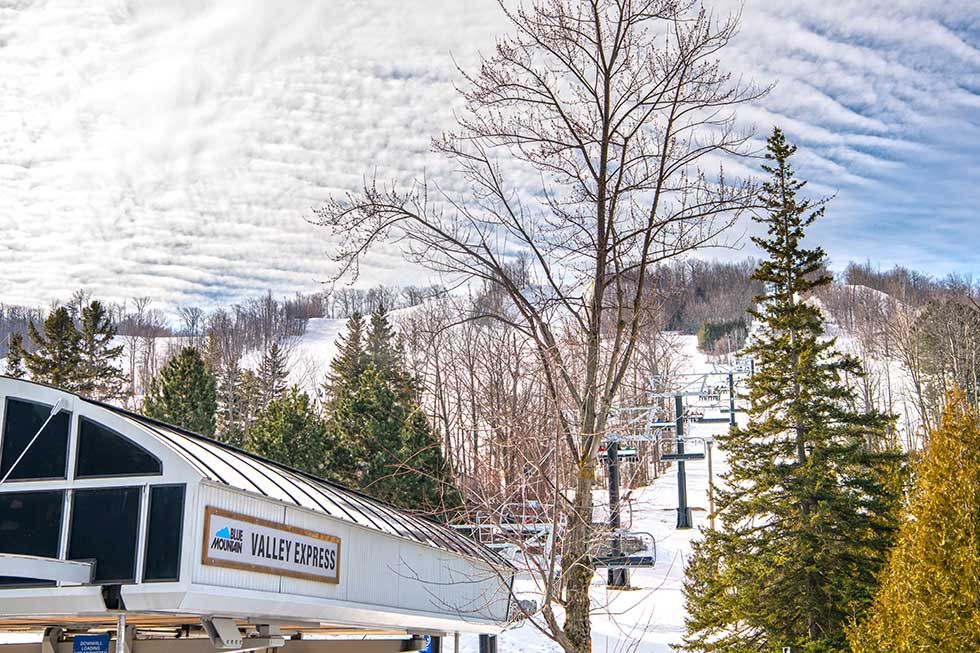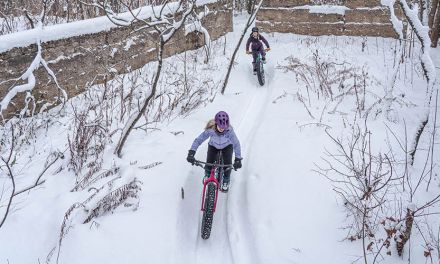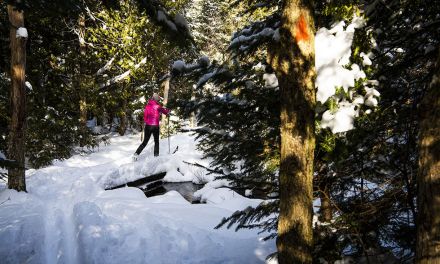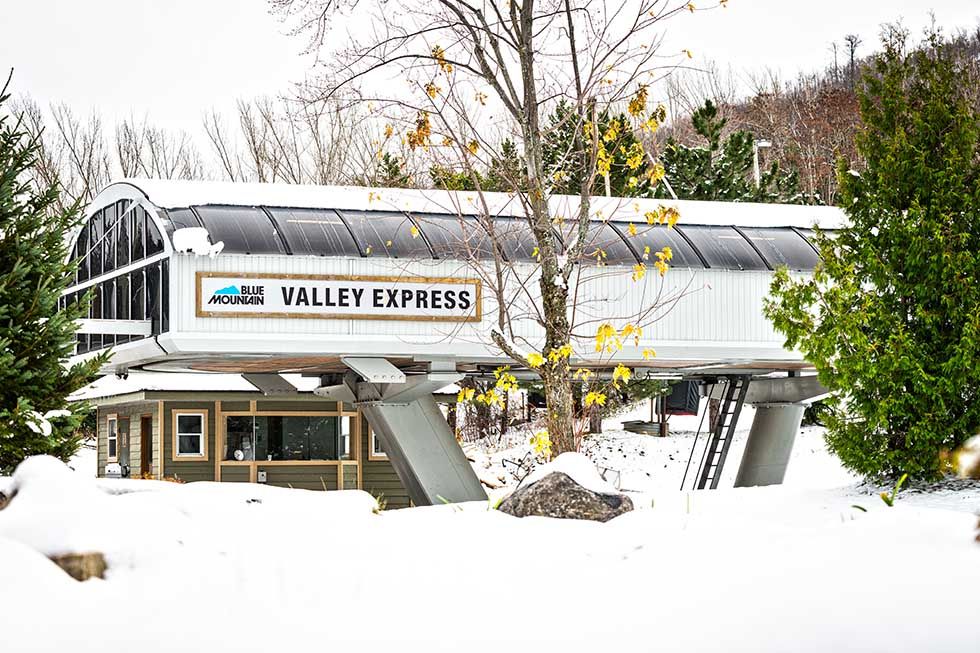
A nod to days gone by, Blue Mountain’s newest chairlift, the Valley Express honours the deep-rooted history of the resort. In fact, many of Blue’s trails and lifts have interesting origin stories—slide on and let’s take a ride through the ages.
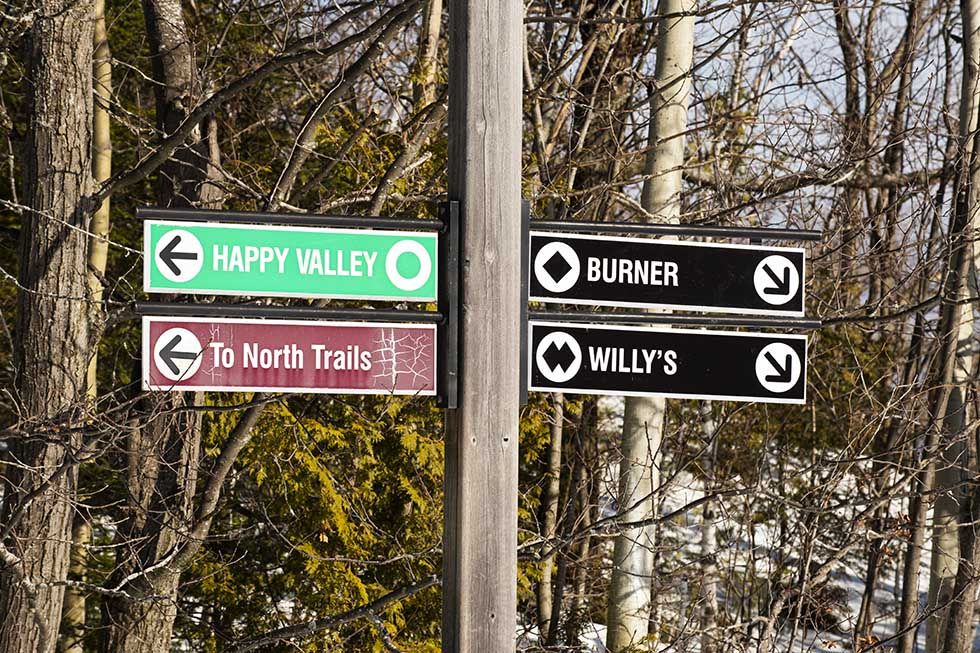
In my opinion, the single best name for a run at Blue Mountain is Burner. A tongue-in-cheek homage to the 3,000-foot mini-bobsled track that left many of us (literally) scarred for life, the name reflects the cement scrapes riders often earned while descending the Great Slide Ride (the gravity-fed attraction closed in 1999, replaced by the much less dangerous successor, Ridge Runner Mountain Coaster).
Chairlift and ski trail names can inspire, trigger anxiety, or make you chuckle. Some are punny (funny puns), while others play off a theme. It’s a difficult task, filling in the blanks on a resort trail map. Names like “Smart Alec” or “Big Baby” read like taunts, while others like “Hell’s Half Acre” are suspiciously nefarious. When you scratch beneath the surface, however, the names of Blue’s lifts and trails reflect the deep-rooted history and culture of the resort, relaying stories and remembering those who laid the groundwork for the sport of skiing in Ontario.
It seems like just yesterday that Blue Mountain announced they were replacing the 25-year-old Inn Triple chairlift with a new detachable six-person high-speed lift. The old chairs found new owners all over the province and I still feel a hint of nostalgia when I spot a chair repurposed as a bench or a swing at homes around the Escarpment. The Century Express opened in the winter of 1999/2000 and as the name suggests, it honored the turn of the new century at Blue.
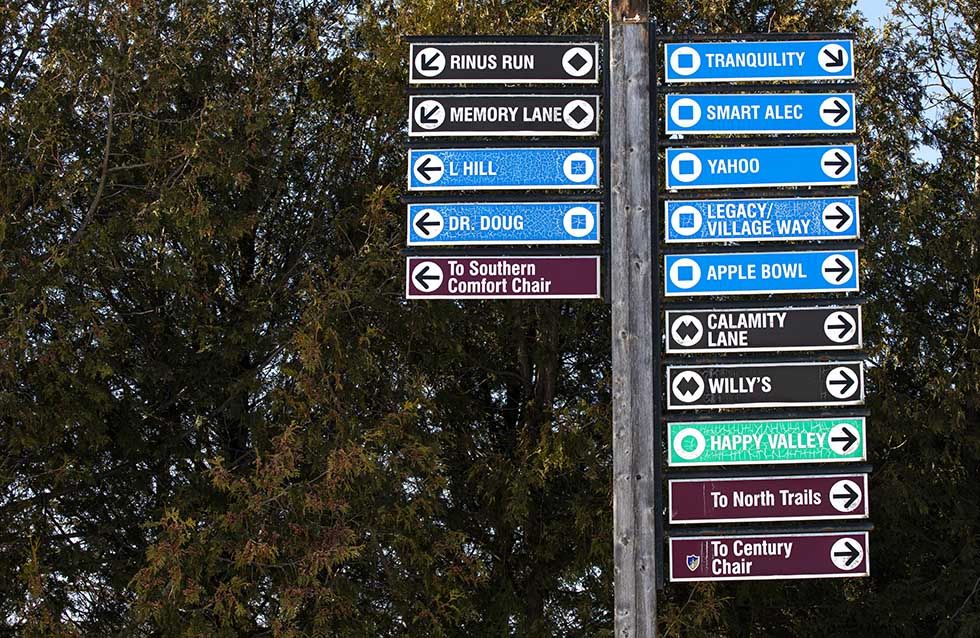
This past summer the hard-working operations team at Blue were busy refreshing the (now quarter of a century old) Century Express and this winter, are proud to unveil their newest high-speed six-pack lift, the Valley Express. Like many of Blue’s lifts and trails, the new name has historical significance; in the late 1920’s, a few keen trailblazers hiked through the valley to the summit of the Escarpment to explore potential ski terrain. After reaching what is now the top of Happy Valley, the group marveled at the snow-covered slope and began dreaming of a lift that would bring them back to the top quickly.
The Blue Mountain Ski Club was formed by local ski enthusiasts in 1935. With the help of the already established Toronto Ski Club (formed in 1924), by 1941 the clubs had installed two rope tows and a sleigh tow called The Red Devil. This somewhat dangerous, definitely unreliable nine-passenger sleigh was pulled by a rope-tow and was named to suit.
As the resort began to grow, the rustic beginnings of Blue Mountain Resort met with advancements in technology. The infamous machine with an unimaginative name—the North Poma—was installed in 1955. The first chairlift in Ontario, the South Chair ushered in a new era for the resort in 1959. While it bears an equally unoriginal name, it was built to last—two of the lift towers have been preserved and still stand exactly as they were when installed. The bullwheel has been repurposed as a conversation piece and hang station for the ‘stein club’.
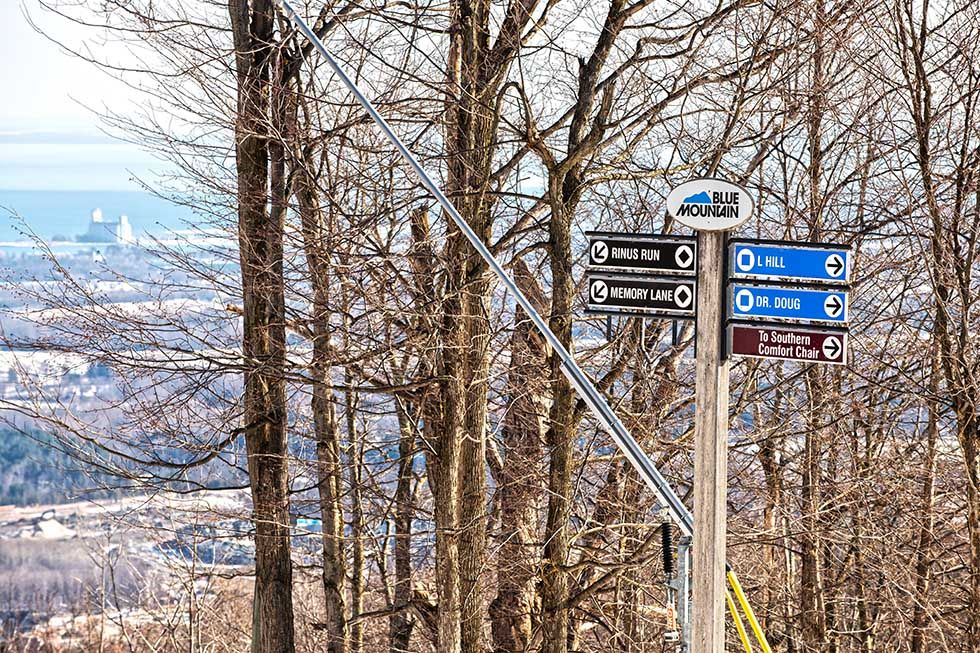
Staying at the south end, O-Hill and L-Hill derived their names from the large letters once painted on the limestone crest of the Escarpment. In a very different meaning than the acronym used today, “LOL” announced the Loyal Orange Lodge, the men’s society of Protestant Irish origin that came with Irish immigrants to Canada in the 1830s. Several runs were named to commemorate momentous global events, such as Kandahar—one of the original three runs cut at the north end of Blue, Kandahar was named for Frederick Sleigh Roberts, 1st Earl of Kandahar, who is credited with the relief of the city in the second Afghan War in 1880. Fast forwarding nearly a hundred years, Neil Armstrong announced, “Houston, Tranquility Base here. The Eagle has landed,” during his monumental moonwalk in 1969. Back on earth, Blue Mountain’s newest run was named Tranquility.

Many of Blue’s trail names were chosen to honour individuals whose legacy is still felt. The trail Dr. Doug was named for Dr. Douglas Firth, an osteopath from Toronto who took it upon himself to organize rescue services for injured skiers in the late 1930s. He would go on to form the Canadian Ski Patrol, serving as the president for ten years. Mary Jane’s Lane is named after the first full-time ski-patroller to be employed by Blue Mountain, Mary Jane Thomas. Rinus van der Vecht was a lift operator who tragically perished in a farmhouse fire in 1973 at the age of 23. Rinus Run, located between L-Hill and Memory Lane is dedicated to his memory.
So, when you’re out riding the all new Valley Express this winter, why not nod your helmet to Blue’s founding fathers and mothers. I imagine they would be gob smacked to learn that this small farming community has been transformed into Ontario’s largest ski destination. Heading into their 82nd winter season, it’s a fitting time to reflect on the past and the present of Blue Mountain Resort.
